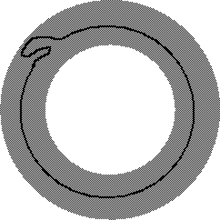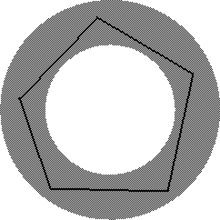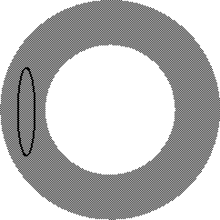Boundary parallel
In mathematics, a closed n-manifold N embedded in an (n + 1)-manifold M is boundary parallel (or ∂-parallel, or peripheral) if there is an isotopy of N onto a boundary component of M.
An example
Consider the annulus . Let π denote the projection map
If a circle S is embedded into the annulus so that π restricted to S is a bijection, then S is boundary parallel. (The converse is not true.)
If, on the other hand, a circle S is embedded into the annulus so that π restricted to S is not surjective, then S is not boundary parallel. (Again, the converse is not true.)

An example wherein π is not bijective on S, but S is ∂-parallel anyway.

An example wherein π is bijective on S.

An example wherein π is not surjective on S.
gollark: I lied. Mars is actually bad.
gollark: Yes, we will be on Mars, the superior planet.
gollark: Perhaps I'll try PHP 6 if that ever happens.
gollark: Actually, this is wrong.
gollark: The lasers can track your hill faster than it can move.
This article is issued from Wikipedia. The text is licensed under Creative Commons - Attribution - Sharealike. Additional terms may apply for the media files.